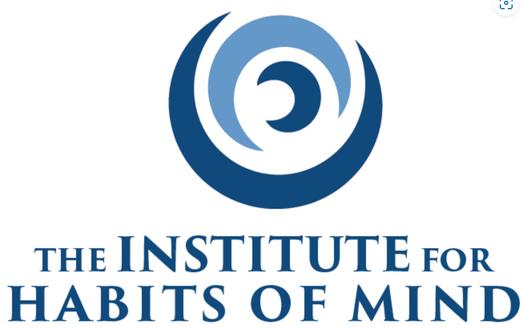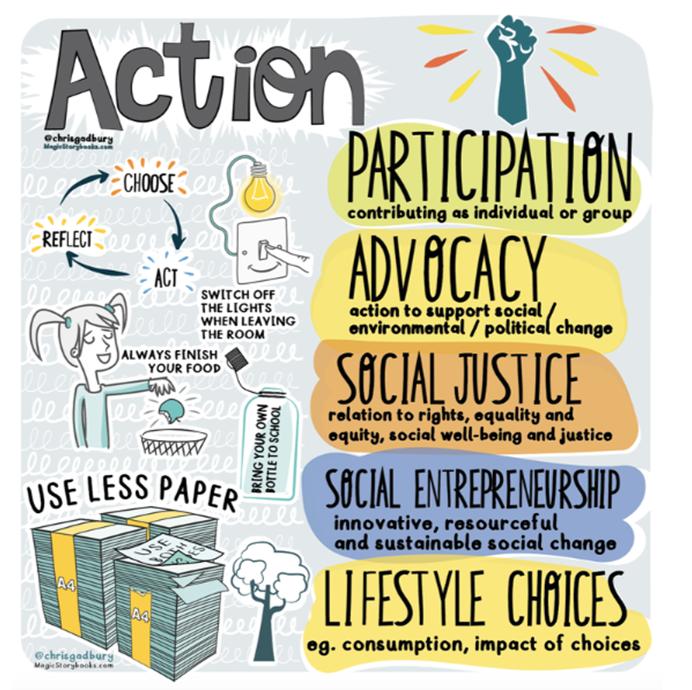ELEMENTSOF21KSCHOOL PEDAGOGY ASKA
ASKAdocumentisthepropertyof21KSchoolandcontainsconfidentialandproprietaryinformation.Itisintendedfortheexclusiveuseoftheauthorized recipient(s)andmaynotbecopied distributed,modified,ordisclosedwithoutthepriorwrittenpermissionof21KSchool.Anyunauthorizeduseordisclosureof thisdocumentmayresultinlegalaction Ifyouarenottheintendedrecipient,pleasenotify21KSchoolimmediatelyanddeletethisdocumentfromyoursystem.

AT ON
21Kenvisionaschoolcommunitywhereeverylearnerisempoweredtodeveloptheir fullpotentialbycultivatingtheirattributes,skills,knowledgeandaction.
21Kstrivestoprovideasupportiveandengaginglearningenvironmentthat confidenceandintegrity. sentialskillsandknowledgetheyneed . ontheirlearninggoalsand andmeaningfulways. entsofourlearnersandinspiresthemto itizens.

21KASKAVISION
The21KSchoolAcademicCrewiscommittedto developinglearners'attributes,skills,knowledge,and yinstruction,creatingapositive ulture,offeringfeedbackand bleforprofessionalpractice,and evetheirfullpotentialthrough aluesofASKAareintendedto ecomelifelonglearnersand iblecitizens.

21KASKAMISSION
Attributes and Learner Profile: arethepersonalqualitiesor characteristicsthatpeoplehaveorwanttodevelop.Theycan influencehowtheythink,feelandbehaveindifferent situations.
Learnerscandeveloptheirattrib theirstrengthsandareasforimp feedbackfromothers,andchalle newthings.
21KSchoolinfusestheworld-re Mind intoitsacademicpractices attributes.
21Klearnerswilllearntobecom developasenseofinquiry,persis thinking,aswellasstrength-base successthatcanbetaught,coach

ATTRIBUTES&HOM
**Inquirers**
They develop their natural curiosity. They acquire the skills necessary to conduct inquiry and research and show independence in learning. They actively enjoy learning and this love of learning will be sustained throughout their lives.
**Knowledgeable**
hey explore concepts, ideas and iss in-depth knowledge and develop
They exercise initiative in applying t mplex problems, and make reasoned, They understand and express idea uage and in a variety of modes of commu others.

They act with integrity and hon ty of the individual, groups and communities. They accompany them.
They understand and appreciate th ives, values and traditions of other individuals and communities. They w, and are willing to grow from the
They show empathy, compassion an onal commitment to service, and act to m ent.
They approach unfamiliar situation nd state convictions even if they are unpopular. Th y g g g h they believe.
**Balanced**
They understand the importance of intellectual, physical and emotional balance to achieve personal well-being for themselves and others.
**Reflective**
They give thoughtful consideration to their own learning and experience. They are able to assess and understand their strengths and limitations in order to support their learning and personal development.
(ibo.org)
Source: Learner profile for IB students - International Baccalaureate®
LEARNER PROFILE
1. Persisting Havelearnersidentifycharacteristicsof persistenceshownbyindividualsinwellknownevents,orimaginewhatmight haveoccurredifmoreorlesspersistence wasshowninagivenscenario.
2. Managing Impulsivity Modeltheuseofpatienceinthe classroom,includingwaittimeduring discussion,orusinghelpfulsentencestems thatreflectintentionalchoice(suchas “Afterreviewingallofthepossible solutions...“).

3. Listening to Others with Understanding and Empathy Identifythemostcommon‘listeningsetasides’inconversationsothatlearnerscan begintorecognizecommon‘errors’that occurineverydaycommunication.These errorsmightincludecomparing,judging, placating,orgivingadviceinsteadofreally listeningandunderstandingamessage.
4. Thinking Flexibly UseRAFTassignments(Role,Audience, Format,Topic)wherelearnersmust considerasituation,letter,speechorpoem fromaperspectiveotherthantheirown, orthatoftheoriginalspeakers.
5. Thinking About Our Thinking (Metacognition)
Asklearnerstomapouttheirown thinkingprocesses.Thiscanbedone simplyatfirst,e.g.,diagrammingthe relationshipbetweenawantandaneed,a gestureandaneedtogesture.Thenmake itincreasinglycomplex—mappingout howcharactersfrombooksorthinkersin historymighthavearrived startingorstoppingpoints
6. Striving for Accuracy an Use‘threebeforeme,’astrate onanyimportantassignm checkedbyatleastthreeo beforebeinghande
7. Questioning and Posin Createa‘parkinglot’areain stockedwithpost-itnot learnerscanpostquestionsth intothepaceorformatofa Thenhighlightthebetter periodically,orusethemas pointsfordiscussionorev planning.
8. Applying Past Knowled Situations Usequestionstemslike“W rememberabout...?”,“Wh everseenanythinglikethis? whatyouknowabout...”W considerthisactivatingsch knowledge,orsimplygett morecomfortableandintun theyalreadyknow,itcanbeahugeboost tothelearningprocess.
9. Thinking and Communicating with Clarity and Precision Remindlearnerstoavoidthevaguenessand abstraction andimprecision oftermslike always,never,all,everybody,teachers, celebrities,technology,they,we,shouldand must.Postthesekindsofwordsorphrases wherelearnerscanberemindedofthem and knowtoavoidthem.Andhopefullyknow whytheyshouldavoidthem. fromyourownlife.Thiscanhelpestablishthe ‘relativity’of‘things,’whichsupportsmore accurateanalysis.Humormakeseverything better.
15. Thinking Interdependently Usingdigitalandsocialmediaimposesatleast atopicalneedforinterdependencefromthe beginning.Themorethinkingispublished andshared,themoreopportunitytherewillbe forcognitiveinterdependence,thougheven opportunitiesdon’tguaranteethatitwill happen.
16 Learning Continuously isitoldideas,writing,and fyareasfordevelopment, revision.Thisisespecially domains,wherecontentis ated,shared,hyperlinked, edintomoreorlessvisual ensharedagain.
16STRATEGIES FORINTEGRATINGTHE HABITSOFMINDINTHE 21KSCHOOLCLASSROOM

ATTRIBUTES&HOM
Integrating habits of mind in the classroom of 21K School canhelp21Klearnersdevelopapositive attitudetowardslearning,enhancetheircriticalthinkingandproblem-solvingskills,fostertheir creativityandcuriosity,andpreparethemforlifelonglearning.Herearesomepossiblewaystointegrate habitsofmindintheclassroom:
Model the habits of mind yourself as a 21K School facilitator . Demonstratehowyouusethem inyourownthinkingandlearningprocesses,andshare ourreflectionsandchallenges ith our learners.Forexample,youcanshowhowyoupersist youmanageyourimpulseswhenyoufeelfrustratedo understandingandempathy,howyouthinkflexibly Make the habits of mind explicit and visible in y orothervisualaidsoverzoomtodisplaythehabitsof frequentlyduringyourinstructionanddiscussions.E thehabitsofmindwhentheytalkabouttheirownor youcanaskthemtoidentifywhichhabitsofmindth activity,ortogivefeedbacktotheirpeersusingtheh Design learning activities that promote the use o yourlearnerstopracticeandapplythehabitsofmind open-endedquestions,problems,orprojectsthatreq toexplore,investigate,create,orcommunicate.Fore oftheirinterestusingvarioussourcesofdata,todesig imaginationandinnovation,topresenttheirfindings Assess and celebrate the development of habits o assessmentsthatmeasurenotonlythecontentknowl habitsofmind.Userubrics,checklists,portfolios,self thatcapturetheevidenceof21Klearners’useofhabi highlightsthestrengthsandareasforimprovemento reward21Klearnerswhodemonstrateexemplaryhab example,youcangivecertificates,badges,stickers,o persistence,accuracy,wonderment,humor,etc.

INTEGRATINGHOMINTHECLASSROOM
Approaches to Teaching (6 elements)
Teaching through inquiry stionsandseekanswersthrough explorationandexperiment criticallyandcreativelyandto developtheirownideasand
Teaching through concep andtheunderlyingconceptsand principlesthatgovernasubje heconnectionsbetweendifferent ideasandtopicsandtodevelo matter.
Teaching developed in loc ingstudentsaboutthelocaland globalcontextsinwhichth esocial,cultural,economic,and politicalfactorsthatshapethe yandresponsibilityforothers.

Teaching focused on effec volvesteachingstudentstowork effectivelyinteamsandgrou munication,leadership,problemsolving,andconflict-resoluti otherstowardacommongoal.
Teaching differentiated to esteachingstudentsinwaysthat aretailoredtotheirindividu nizesthatstudentshavedifferent learningstyles,strengths,an g p mwiththesupporttheyneedto succeed.
Teaching informed by assessment: Involvesusingassessmentdatatoinformteachingpractices.It helpsteacherstoidentifyareaswherestudentsarestrugglingorexcelling,andtoadjusttheirteaching strategiesaccordingly.
1. 2. 3. 4. 5. 6.
APPROACHESTOLEARNING- SKILLS

eparechildrenfortheworldtheywillface? enerationhasaskedastheywitnessedtheir assroomtotheworkplace.Ithaspersisted throughtheIndustrialRevolution,through aofTechnologicalInnovation.
ies,skillsandattitudesthatpermeatethe ironment.
iefthatalargeinfluenceonastudent’s tyoulearnbutalsohowyoulearn. dwiththeHOMandlearnerprofile entlearningandassiststudentpreparation
APPROACHESTOLEARNING(ATL)ARESKILLSDESIGNEDTOENABLE

1.COMMUNICATIONSKILLS:
2.SOCIALSKILLS:
3.SELF-MANAGEMENTSKILLS
4.RESEARCHSKILLS
5.THINKINGSKILLS
EachATLhassubskills.Planninghastobedone toensureallsubskillsaredevelopedthroughthe teachinglearningprocess.
STUDENTSTO“LEARNHOWTOLEARN.”
COMMUNICATION SKILLS
How can learners -
Comprehenddirectionsandinstructions
Listenattentivelytoothers
Articulateclearlyinsentences,engagein conversations,andconveyideas
Simulaterolesandsituations
Readfromvarioussources,interpretwhathasbeen read,reflectanddrawconclusions
Write Decodevisual,audio,andoralcommunication
Presentinformationusingtechnologyandarangeof materials
Asa21KSchoollearner,studentsneedcommunicationskillstounderstandwhattheyarelearning,expressthemselvesclearly inassignmentsandexams,andparticipateinclassdiscussionsandgroupprojects.Intheclassroom,theycanimprovetheir communicationskillsbylisteningactivelytotheirfacilitatorsandpeers,adaptingtheircommunicationstyletodifferent situationsandaudiences,beingfriendlyandrespectfultoothers,andgivingandreceivingfeedbackconstructively.(Inthe contentforeveryskill,pleasereplacetheywithstudents)

SOCIAL SKILLS
How can Learners:
Demonstrateempathyandtolerancefor diverseperspectives
Collaborateandcooperatewithothersina fairmanner

Engageinconstructivegroupdiscussion–listeningactively,questioningcritically, expressingopinionsrespectfully
Adapttodifferentcontextsandexpectations ofbehaviour
Asa21KSchoollearner,theyneedcollaborationskillstocooperatewiththeirclassmatesongroupprojects, assignments,andpresentations.Intheclassroom,theycanimprovetheircollaborationskillsbybeingcooperativeand supportiveofothers,sharingtheirideasandopinionsopenlyandrespectfully,respectingdiversityanddifferent perspectives,andresolvingconflictspeacefullyandfairly.
SELF-MANAGEMENT SKILLS
How can learners:
Indulgeinplanningandcarryingoutactivities independentlyandeffectively
Workongrossandfinemotorskills
Expressself-regulationofemotions
DevelopAbilitytoadapttonewsituations
Takeresponsibilityfortheirownwell-being

Shareresponsibilityfordecision-making
Trytofollowessentialagreements–intheclass roomandoutside
Asa21KSchoollearner,theyneedself-managementskillstobeproductiveandsuccessfulintheiracademicandpersonal life.Intheclassroom,theycanimprovetheirself-managementskillsbyorganizingtheirtimeandtasksefficiently, managingtheirstressandemotionspositively,andreflectingontheirlearningprocessandoutcomesregularly
RESEARCH SKILLS
How can Learners:
Askquestionstonurturecuriosityabout howsomethingcanbedone
Observerelevantdetails
Figureoutwaystogetnecessary information
Drawconclusionsfrominformation
Useallsensestoobserveandnoticedetails
Gather,document,organize,andinterpret data
Recordingobservations
Acknowledgedatasources
Asa21KSchoollearner,theyneedresearchskillstoconductacademicresearch,completeassignmentsandprojects,and developcriticalthinkingandproblem-solvingskills.Intheclassroom,theycanimprovetheirresearchskillsbyfinding relevantandreliableinformationfromdifferentsources,interpretingandjudgingthequalityandcredibilityof information,andcreatingoriginalandethicalinformationproductsusingvariousmedia.

THINKING SKILLS
How can Learner:
Beabletorecallfactsandvocabulary
Understandwhatisreadortaught
Applyknowledgeinnewsituations
Compareandcontrastrelationships
Expressopinions
Reflectondecisionmaking
Understanddifferentpointsofview
Reflectontheirownlearning
Asa21KSchoollearner,theyneedthinkingskillstounderstandcomplexconcepts,solveproblemscreatively,andlearnfrom differentexperiences.Intheclassroom,theycanimprovetheirthinkingskillsbyanalysingandevaluatingissuesandideas critically,generatingnovelideasandconsideringnewperspectivescreatively,andusingskillsandknowledgeinmultiple contextstransferably.

THINKING SKILLS BLOOMS TAXONOMY
Create: Combiningid

Evaluate: Makin aor concept
Analyze nd explainin
Understand: Explainingaconceptintheirownwords, describingamathematicalconceptinwriting.
Remember: Memorizingbasicfacts,dates,events, persons,places,concepts.
A g
new
KNOWLED
KnowledgerepresentstraditionalsubjectareassuchasLanguage,Math,Science,SocialStudies,andArtsthroughdifferent transdisciplinaryapproacheslikeinquiryandproject-basedlearning.Learnersexplorethroughstructuredinquirytodevelop coherent,in-depthunderstanding.
Inquiry-basedlearningisalearner-centeredapproachthatfocusesonquestioning,criticalthinking,andproblem-solving.It encourageslearnerstoaskquestionsandseekanswersthroughexplorationanddiscovery.Project-basedlearningisalearnercenteredapproachthatfocusesonreal-worldproblemsandchallenges.Itencourageslearnerstoworkcollaborativelytosolve problemsandcreatesolutions.
Byusingtheseapproaches,learnerscandevelopadeeperunderstandingofthesubjectmatterandhowitrelatestotheworld aroundthem.Theycanalsodevelopimportantskillssuchascriticalthinking,problem-solving,collaboration,and communication.

TheThreeStagesofBackwardDesign fordesigningeffectivecurriculumplans
Thisstageinvolvesidentifyin etodoattheendofthelearning experience.Thishelpslearners wardsandwhattheywillbeableto
Thisstageinvolvesdeterminin understandingandmasteryofthe desiredresults.Thishelpslearner howthattheyhavelearnedwhatwas
3. P

ction:
Thisstageinvolvesplanningt thatwillhelplearnersachievethe desiredresults.Thishelpslearner hattheyneedtodotobesuccessful.
Byusingbackwarddesign,facil g p arefocusedonlearnerlearningand achievement.Ithelpsensurethatlearnershaveaclearunderstandingofwhattheyareworkingtowards,how theywilldemonstratetheirunderstanding,andwhattheyneedtodotobesuccessful.
Id if d i d l
:
STAGE ONE – IDENTIFY DESIRED RESULTS:

Thefirststageofbackward ninggoalsofthelesson,unit orcourse.Theinstructor gthreequestionsasthey progre ontent:
Whatshouldparticipantshe encounter?
Whatknowledgeandskillss
Whatarebigideasandimpo houldretain
Byansweringthesequest stimportantcontentthat learnersneedtoknowa hatlearnershaveaclear understandingofwhatthey g yneedtodotobesuccessful.

STAGE TWO – DETERMINE ACCEPTABLE EVIDENCE:
Thesecondstageofback dertheassessmentsand performancetasksstu monstrateevidenceof understandingandlearnin followingtwoquestionsat

HowwillIkno siredresults?
WhatwillIaccepta ngandproficiency?
Byansweringthesequest mentsthatarefocusedon learnerlearninganda tlearnershaveaclear understandingofwhatthey learnedwhatwasintended.
STAGE THREE – PLAN LEARNING EXPERIENCES AND INSTRUCTION:
Thefinalstageofbackwarddesigniswheninstructorsbegintoconsiderhowtheywillteachthecoursecontentin ordertohelpstudentsachievethed ginstructionalstrategiesandlearning activities estudents.
Oncethelearninggoalsandassessm nstructorcanbegintodevelopaclear visionofwhichstrategieswouldwor esandinformationnecessarytoattain
Toachieveth
Whatenablingknowledge(facts,con

wingquestions:
cedures,strategies)willstudentsneed toacquirein esiredresults?
Whatactivitiesw wledgeandskills?
Whatneedstobetaughtand inlightofperformancegoals?
Whatmateria ishthesegoals?
Byansweringthesequestions,theinstructorcandevelopinstructionalstrategiesandlearningactivitiesthatare alignedwiththedesiredlearningoutcomesandthatwillenablestudentstoachievesuccessinthecourse.
gina21Kclassroom-is ngtomakeadifferencein participation,advocacy, socialjustice,socialentrepreneurship,orlifestylechoices. Actioncanhelplearnersbecomemoreactive, responsible,andinternationallymindedlearnersand citizens.

1. Participation: ContributionasIndivi

2. Advocacy: ActiontosupportSocialo

3. Social Justice: Rights,EqualityandEquity,SocialWell-beingandJustice
4. Social Entrepreneurship: Innovate,ResourcefulandSustainablesocialchange
5. Lifestyle Choices: Consumption,ImpactofChoices
IPATION ASINDIVIDUALOR OUP
meaninyourclass,andcommunicateyourexpectationsandgoals
.Forexample,youcanexplainthatparticipationmeansnotonlyspeakingbutalso listening,askingquestions,givingfeedback,andbeingrespectfulofothers’opinions.
Assess 21K learners’ participation and contribution usingrubricsorcriteriathatarealignedwithyourlearning objectivesandthataretransparentandfairtoyour21Klearners.Forexample,youcanusearubricthatevaluates21K learnersonthequality,frequency,relevance,andevidenceoftheircontributions,aswellastheircollaborationand
bycreatingapositiveandsupportiveclassroomclimatethat

.Forexample,youcanmodelpositivebehaviors,acknowledgeandpraise21K learners’efforts,addressanyconflictsorissuespromptly,andencourage21Klearnerstosharetheirperspectivesand experiences.
Teach 21K learners the skills needed to participate and contribute effectively,suchasactivelistening,critical thinking,problem-solving,self-regulation,andself-reflection.Forexample,youcanprovideexplicitinstruction, feedback,andpracticeopportunitiesfor21Klearnerstodeveloptheseskillsinvariouscontexts. Devise activities that elicit participation and contribution from21Klearners,suchasdiscussions,debates, simulations,games,projects,orpresentations.Forexample,youcanuseactivitiesthatarerelevant,engaging, challenging,andmeaningfulfor21Klearnerstoapplytheirknowledgeandskillsindifferentsituations.
Action
ADVOCACY PPORTSOCIALOR ALORPOLITICAL ANGE

e ofadvocacy,andhowitrelatestotheirrights,responsibilities, eansspeakingupforyourselforotherswhoarefacinginjusticeor heworld.
advocacy campaigns fromhistoryandcurrentevents,and youcanshow21KlearnershowadvocateslikeMartinLuther orcivilrights,orclimatejustice.
theycareaboutandwanttoadvocatefor,andhelpthemresearch ple,youcanhave21Klearnersconductsurveys,interviews,or opicssuchasbullying,animalwelfare,orgenderequality. y vocateeffectively,suchascommunication,criticalthinking, problem-solving,collaboration,andself-regulation.Forexample,youcanteach21Klearnershowtowritepersuasiveletters orspeeches,howtocreatepostersorflyers,howtoorganizepetitionsorrallies,orhowtousesocialmediaorblogs. Provide 21K learners with opportunities to practice andapplytheiradvocacyskillsinauthenticcontexts,suchasschool clubs,communityprojects,oronlineplatforms.Forexample,youcanhave21Klearnersjoinorstartaclubthatsupportsa causetheycareabout,participateinaservice-learningprojectthataddressesacommunityneed,orcreateawebsiteor podcastthatraisesawarenessaboutanissue.
Action
LJUSTICE LITYANDEQUITY, EINGANDJUSTICE

ality and equity and social well-being, andhowtheyrelatetotheir atequalitymeansgivingeveryonethesamething,whileequitymeans hatsocialwell-beingmeanshavingagoodqualityoflife,which
d social well-being issues and movements fromhistoryandcurrent ple,youcanshow21Klearnershowequalityandequityandsocial orNelsonMandelafoughtforcivilrights,peace,ordemocracy. ctofracismanddiscrimination,andhowtochallengeandprevent ributionsofpeopleofdifferentracesandethnicities.Someactions izingorattendingaculturalfair,orcreatingorsigningapledgeto
Gender justice: 21Klearnerscanlearnaboutthehistoryandimpactofsexismandgenderinequality,andhowtochallengeandprevent them.Theycanalsocelebrateandappreciatethediversityandcontributionsofpeopleofdifferentgendersandsexualorientations.Some actionstheycantakeincludejoiningorstartingagenderequalityclub,organizingorattendingagenderawarenessworkshop,or creatingorsigningapledgetorespectandvaluegenderdiversity.
Environmental justice: 21Klearnerscanlearnaboutthehistoryandimpactofenvironmentaldegradationandclimatechange,andhow tochallengeandpreventthem.Theycanalsocelebrateandappreciatethebeautyandimportanceofnatureandwildlife.Someactions theycantakeincludejoiningorstartinganenvironmentalclub,organizingorattendingaclean-uporplantingevent,orcreatingor signingapledgetoprotectandconservetheenvironment.
Action
EPRENEURSHIP SOURCEFULAND SOCIALCHANGE
ocialentrepreneurship,andhowitrelatestotheirrights, ocialentrepreneurshipmeansusingcreativeandentrepreneurial helpcreatepositivechangeintheworld.
andsocialenterprisesfromhistoryandcurrentevents,andanalyze w21KlearnershowsocialentrepreneurslikeMuhammadYunus, rcestofightforpovertyalleviation,fairtrade,orchildrights. al problems thattheycareaboutandwanttosolve,andhelp ms.Forexample,youcanhave21Klearnersconductsurveys, onsabouttopicssuchashomelessness,pollution,oreducation. ndimplementsolutionsforsocialorenvironmentalproblems, suchascommunication,criticalthinking,problem-solving,collaboration,andleadership.Forexample,youcanteach21K learnershowtoidentifyopportunitiesandneeds,howtodesignproductsorservicesthatmeetthoseneeds,howtoplanand manageaprojectorabusiness,orhowtomeasureandevaluatetheirimpact.
Provide 21K learners with opportunities to practice and apply theirsocialentrepreneurshipskillsinauthenticcontexts,such asschoolclubs,communityprojects,oronlineplatforms.Forexample,youcanhave21Klearnersjoinorstartaclubthatworks onasocialorenvironmentalissuetheycareabout,participateinaservice-learningprojectthataddressesacommunityneed,or createawebsiteorpodcastthatshowcasestheirsolution.

Action
ECHOICES ON,IMPACTOF OICES

oflifestylechoices,andhowtheyrelatetotheirrights,responsibilities,andvalues.For example,youcanexplainthatlifestylechoicesarethethingswedoeverydaythataffectourphysical,mental,emotional,andsocialhealth,aswell asourenvironmentandsociety.Youcanalsoexplainthatmakinghealthyandresponsiblelifestylechoicescanhelpuslivelonger,happier,and
ofhealthyandresponsiblelifestylechoicesandtheirbenefits,aswellasunhealthyandirresponsiblelifestyle choicesandtheirconsequences.Forexample,youcanshow21Klearnershoweatingabalanceddietrichinfiber,fruits,andvegetablescanhelp preventdiseasesandimprovedigestion,whileeatingjunkfoodhighinsugar,fat,andsaltcanleadtoobesity,diabetes,andheartproblems.You canalsoshow21Klearnershowexercisingregularlycanhelpboostenergy,mood,andimmunity,whilebeingsedentarycancausefatigue, Encourage 21K learners to identify their own lifestyle choices and evaluate theirimpactonthemselvesandothers.Forexample,youcan have21Klearnerskeepajournalorachartoftheirdailyactivities,suchaswhattheyeat,drink,doforfun,oruseforentertainment.Youcanthen havethemreflectonhowtheirchoicesaffecttheirhealthandwell-being,aswellastheirenvironmentandsociety.Youcanalsohavethem comparetheirchoiceswiththoseoftheirpeersorpeoplefromdifferentculturesorbackgrounds.
Teach 21K learners the skills and tools theyneedtomakehealthyandresponsiblelifestylechoices,suchascommunication,criticalthinking, problem-solving,collaboration,andself-regulation1.Forexample,youcanteach21Klearnershowtoreadnutritionlabels,planbalancedmeals, setfitnessgoals,managestress,copewithemotions,resistpeerpressure,seekhelpwhenneeded,orusetechnologysafelyandwisely. Provide 21K learners with opportunities to practice andapplytheirlifestylechoiceskillsinauthenticcontexts,suchasschoolclubs, communityprojects,oronlineplatforms1.Forexample,youcanhave21Klearnersjoinorstartaclubthatpromoteshealthyeating,physical activity,mentalhealth,orenvironmentalawareness.Youcanalsohave21Klearnersparticipateinaservice-learningprojectthataddressesa communityneedrelatedtohealth,well-being,orsocialjustice.Oryoucanhave21Klearnerscreateawebsiteorpodcastthatshowcasestheir lifestylechoicesandtheirimpact
Action
ASKA-WORKINGONOUTCOMES

Thisiswherethelearning goalsandoutcomesare identifiedandclarified.What shouldstudentsknow, understand,andbeabletodo bytheendoftheunit?What arethebigideasandessential questionsthatguidethe learning?Whatarethe specificknowledgeandskills thatstudentsneedtomaster?
HOWWILLWERESPOND WHENSOMESTUDENTS DON’TLEARN?
Thisiswherewewillbe providingopportunitiesfor j tb dl i ,inquirylem-based estudents estsand uthentic mentinga processof esstudents meand acherscan hensome arn.
LEARNINGFORSTUDENTSWHO AREALREADYPROFICIENT?
Thisiswherewewillofferskill extensions,interestextensions,or socialextensionsthatbuildonthe corecontentandprovidemore depthandcomplexity.Howcan weuseextension-planning templatesandexamplestodesign yourownlessonextensionsthat integratestudentvoiceand choice?Howcanweallow studentstoexploretheirinterests andapplytheirskillsinauthentic contexts?Canstudentsre-teacha conceptortopictoapartnerora smallgroup,orcreatetheirown quizzesorsummaries?

STAGE1 DESIREDRESULTS STAGE2 EVIDENCE STAGE3 REVIEW&REVIST STAGE4 ACCELERATE WHATDOWEWANTALL
HOWWILLWEKNOWIFTHEY LEARNIT? Thisiswheretheassessment e d d d d un p e
STUDENTSTOKNOWANDBE ABLETODO?
HOWWILLWEEXTEND
OUTCOMES
REFLECT TUNE ADJUST
Whatdidlearnerslearn?
Howdidyoufeelduringandafter interactingwithlearners?
What challenges did you as facilitatorfaceandhowdidyou overcomethem?
What strengths and weaknesses didyoudiscoveraboutlearners? Howdidthisexperiencerelateto yourgoalsandvalues?
Whatfeedbackdidyoureceivefrom learners?
How accurate and helpful was the learnersfeedback?

Whatarethegapsbetweenlearners currentperformanceandtheirdesired performance?
What are the opportunities for improvementorgrowth?
Whatarethebestpracticesorstrategies thatyoucanadoptoradapt?
Whatchangesdoyouneedtomaketoimprovelearnersperformanceoroutcomes? Howwillyouimplementthechangesinyournextactionorsituation?
Whatresourcesorsupportdoyouneedtomakethechanges? Howwillyoumonitorandmeasurelearnersprogressandresults? Howwillyoucelebratelearnersachievementsorlearnfromyourfailures?
Reflect
Tune
Adjust OUTCOMES RETROSPECTIVE
ASKAEXPERTS

Name: Ms. Aruna Shetty
Title: HeadofSchools
Name: Ms. Vandana Khera
Title: Head-Academic
Training&Development
Name: Tanuja Amin
Title: Principal(AmericanSchool)





